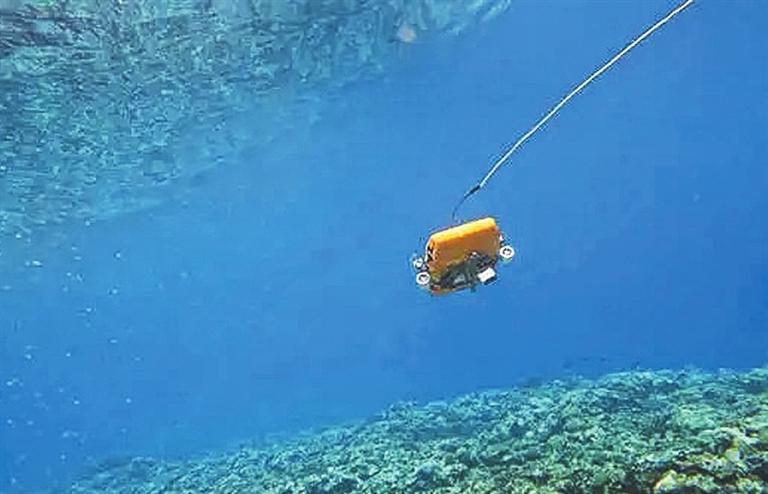

CHINESE scientists have developed an agile underwater robot called Sea Turtle that achieves centimeter‑level capability for near‑seafloor observation and, with its low‑disturbance movements, heralds a new era of more precise, efficient and environment-friendly underwater exploration. The 70‑centimeter‑wide robot, developed by a team led by Professor Wang Gang of the College of Shipbuilding Engineering at Harbin Engineering University, can dive to the seabed and glide just a few centimeters above coral reefs, stirring only slight ripples of sediment as it moves. That ability makes it especially suited to coral monitoring and a wide range of other tasks such as underwater fishing, search and rescue and benthic surveys, the Science and Technology Daily reported Sunday. Wang notes that existing deep‑sea submersibles and conventional benthic robots face serious limitations: they often need to wait for disturbed sediment to settle before collecting data; their propulsion systems churn up the bottom and damage fragile habitats; while human divers have very limited windows for safe observations and cannot access deeper sites. Traditional robots also struggle with complex terrain and deliver unsatisfactory monitoring results in delicate ecosystems. The researchers studied dozens of marine animals and found that the turtles’ angled flipper strokes reduce water disturbance while maintaining efficient propulsion. After numerous trials, the team developed a mathematical model linking low‑disturbance navigation performance to propulsion layout and hull geometry, which greatly accelerated their R&D progress and guided the robot’s design. Comparative tests show that Sea Turtle’s precisely arranged propellers produce almost no surface ripples and reduce sediment disturbance by about 90% compared with conventional designs. To capture fine color details and closeup imagery of coral, the robot is designed to operate within a few centimeters of the seabed — requiring extremely high sensing ability and fast, reliable posture control to avoid collisions. The team upgraded the robot, cutting its sensor noise by roughly 76%, shortening response time by about 10%, and improving operational stability more than sevenfold. They also integrated posture sensing with advanced control algorithms, enabling the robot to rotate and reorient freely across a full 360 degrees with tentacle‑like agility. The Sea Turtle robot not only advances coral observation but also opens possibilities for sensitive tasks such as targeted sampling, rescue operations and other sustainable underwater explorations.(SD-Agencies) | 
